
My “partner in crime” and frankly the whole reason they worked as well as they did — the brilliant Greg Kramer, who sadly died in 2013 just as he was about to triumph as Inspector Lestrade against Jay Baruchel’s Sherlock Holmes.
The other day I was sufficiently incautious to mention that 30-some years ago I had had a little side gig — in cooperation with the late great Greg Kramer, mystery novelist, stage magician, actor, and polymath — producing live murder mystery games. You demanded more details in the comment section, and I can but comply. Honestly, I’m happy to tell the story. I think this little pattern for game production allows a small group of actors to earn some extra money in an easy and fun way, and I have long wanted to see such a thing in my vicinity that I didn’t write myself, if you know what I mean.
How this came about was, Greg and I were young and energetic and wanted to make some extra money using our joint expertise in mysteries. We had access to a group of impecunious young actors who were always up for a chance to work, regardless of how small the reward, and who enjoyed this sort of improvisational game, once they grasped its basics. So together we wrote a script and tried it out; asked a handful of friends to cover our costs in return for a chance to play, and it was very successful. We had a day of fun, running around in costume solving a mystery, and at the end of it all a banquet where the solution was revealed. Unfortunately the preparation was also very time-consuming, with smaller returns than seemed adequate for all the work, and eventually after some wonderful and unique games that a handful of people will remember forever 😉 we decided to pack it in. It was either that or take the business full-time, and both Greg and I had other irons in the fire at the time.
 But we realized that the actors themselves could run such an enterprise if they had a pattern with which to work; they didn’t need us to make dinner arrangements, for instance, or find costumes. It’s not a good idea to repeat the same game over and over, since that cuts down dramatically on repeat business. What we wanted was a way to generate a game that was roughly similar each time but with variations in the details that were easy to remember. One actor with whom we were working wanted the opportunity to create “corporate” games and we tried to bear this in mind.
But we realized that the actors themselves could run such an enterprise if they had a pattern with which to work; they didn’t need us to make dinner arrangements, for instance, or find costumes. It’s not a good idea to repeat the same game over and over, since that cuts down dramatically on repeat business. What we wanted was a way to generate a game that was roughly similar each time but with variations in the details that were easy to remember. One actor with whom we were working wanted the opportunity to create “corporate” games and we tried to bear this in mind.
So we created a process that generates a game that uses nine actors and can host about 20 to 30 paying guests. It should take about six hours and the final 90 minutes or so are a banquet; everything should take place in the same conference room at a hotel, no running around.
As you’ll see the gender of the actors doesn’t really matter until you start generating the details of the script; any role can be pretty much any gender. What we found was popular is when we created scripts that had characters that our audience “knew” — that were recognizable parodies of real people. This seemed to strike a chord somehow and made people more enthusiastic to interact with strangers if that stranger was dressed like, and acting like, Elvis Presley or Hugh Hefner or Hillary Clinton. But note that these are just suggestions; you don’t CALL the character Hugh Hefner, because you need the details to be useful rather than correct.
So you begin with three people all in the same line of work who are having some sort of competition amongst themselves. I’ll give you a sample one but of course you can fill in these blanks in any way you want, as long as the characters are related in a certain way. We used three “movie stars” who were competing to be the on-air representative of a very large company, Mysterico: one based on Bette Davis who smoked a lot and swore, one based on Joan Crawford, very heavily made up and flirtatious, and one based on Mary Pickford, who was swathed in white ruffles and far more elderly than she was willing to let on. (I’ll just use those names here for convenience, but don’t you do it.) If you have more male actors than females, make it three famous sportsmen — it can be politicians, any kind of public figure, or if you are doing a corporate job, it’s three job candidates competing for a job at the very company that’s hosting the day.
 Each of those three main characters gets one relationship. Bette Davis had a handsome young “boy toy” who was very much on the make financially; Joan Crawford had a daughter who only spoke in whispers and was terrified of strangers; and Mary Pickford had an elderly husband who was a famous movie producer, under instructions to not reveal his or her age.
Each of those three main characters gets one relationship. Bette Davis had a handsome young “boy toy” who was very much on the make financially; Joan Crawford had a daughter who only spoke in whispers and was terrified of strangers; and Mary Pickford had an elderly husband who was a famous movie producer, under instructions to not reveal his or her age.
So that’s your six main suspects; three groups of two. Then you add another actor who’s running the game — in the role of the president of the Mysterico company. She tells the participants when to get things rolling and acts as a person that the audience can ask process questions (where are the washrooms, what do I do now).
Another actor plays two roles as identical twins. He begins the day as an investigative reporter for a gossip magazine who hints that he has a juicy piece of gossip about one of the three stars, and is promptly murdered. His identical twin returns after lunch in the same role — hey, identical twins can work at the same magazine! — with all kinds of information about the backgrounds of the stars but is remarkably hard to get interesting clues out of. He is, indeed, what I called elsewhere the SEP, Somebody Else’s Problem.
And finally you have one actor impersonating a famous detective: Nero Wolfe or Miss Marple or Hercule Poirot, but not by name. The detective character leads the audience through the process of trying to solve the crime.
You start the day by “introducing” the movie star characters to the group — the audience gets to vote on who will make the best spokesperson for Mysterico, so the stars try to be on their “best behaviour”. Their three associates are in the background, available to talk to whomever is clever enough to see them sitting to one side and approach them, but mostly the three movie stars will be talking to a large-sized group of people, in three sub-groups.
Here, they lay the first plot trails. There has to be a plot trail that takes each of the six suspects to two murders (you’ll understand more after I tell you how and when the murders occur). So you start before the murders, of course, and keep it going all the way to dinner. Essentially each of the movie stars has something in her background that she doesn’t want anyone to know; she herself might not kill to keep it a secret, but her associate suspect might. And of the three movie stars, at this point if you’re listening, A will give you a hint as to the secret of B, B has a hint to the secret of C, and C has a hint to the secret of A.
 So you do an hour to get things rolling where the first half-hour is taken up by the movie stars introducing themselves to the audience, then in the next half-hour each star acknowledges the relationship with their significant other, and all six actors are working to get across (subtly) the hint that they have available for anyone who asks them. Bette Davis is broke; Joan Crawford is about to be indicted for child abuse; and Mary Pickford, decades ago, used to be a man. Since Pickford is going to be the murderer, that’s the “dread secret” — more about that later — and you need a secondary secret at the same level, which in this case is that she’s over 80 and trying to pass for 50. Note at this point that anyone can have the dread secret and you don’t even need to tell all the rest of the cast what it is. It just has to be a stronger motive than the rest.
So you do an hour to get things rolling where the first half-hour is taken up by the movie stars introducing themselves to the audience, then in the next half-hour each star acknowledges the relationship with their significant other, and all six actors are working to get across (subtly) the hint that they have available for anyone who asks them. Bette Davis is broke; Joan Crawford is about to be indicted for child abuse; and Mary Pickford, decades ago, used to be a man. Since Pickford is going to be the murderer, that’s the “dread secret” — more about that later — and you need a secondary secret at the same level, which in this case is that she’s over 80 and trying to pass for 50. Note at this point that anyone can have the dread secret and you don’t even need to tell all the rest of the cast what it is. It just has to be a stronger motive than the rest.
Then the gossip columnist announces that he knows something about one of the movie stars that will sink her chances in the contest; of course, she immediately leaves the room without saying what it is, gets killed off-stage (in such a way that any of the six suspects could have poisoned their drink) and you introduce the detective character by having him discover the body and begin to run the investigation.
All the questioning is done in public. This is now stage 2, and a new set of hints is available. Each star knows something about the partner of one of the other stars; for instance, Bette and her boy-toy were the ones who dropped a dime on Crawford’s abusive lifestyle. Crawford knows Pickford’s age for a fact, because she used to interact with her daughter (who also remembers her). And Pickford’s husband is fully aware of Bette’s financial situation and is hoping to use it to get her to make movies at a cut rate. No one gives any hints yet about the “dread secret”.

That questioning doesn’t take long, but now you need three set pieces to move the action along. Essentially this is three arguments between any two of the six suspects — so as to involve all six — such that some can of beans ends up getting spilled. Except it’s generally a can of beans of which the smarter members of the audience are already aware; Davis pays her male companion, Crawford beats her daughter with a coat hanger, Pickford remembers hearing about the Hindenberg on the radio. This lets the slower-paced detectives feel as though they’re getting somewhere.
Meanwhile, the identical twin of the morning’s victim returns and says, “I know about the dread secret that my sister was hinting about this morning.” The identical twin, though, has a very difficult situation; her instructions are to delay telling anything about the dread secret until dinner starts. She gets people away from piercing her defences by being unpleasant or difficult — she cries, she’s drunk, she’s in shock, she only wants to talk about Jesus or UFOs or megavitamin therapy. But she will generally create a crowd to distract people from the second murder.

These are, of course, contestants from RuPaul’s Drag Race; I wouldn’t recommend going this over the top. But almost LOL.
At this point, one of the six suspects should get killed; ideally in a dramatic and public way. Corpse #2 is usually the person who wants money the most, because they’ve tried to blackmail the murderer and gotten killed for their pains. Let’s say that this is Bette Davis’s boy toy. He has to see something that leads him to the “dread secret” — here, that Mary Pickford was one of the first to undergo a sex transition. He mentions something about a “little white scar” to Bette Davis, who doesn’t realize that he’s referring to the place where Pickford had her Adam’s apple shaved down, and then goes off and gets poisoned. Davis has to find a way to get this clue over to people very casually without making a big point of it.
About 45 minutes before dinner, the second body is discovered and all the other suspects go crazy. Here, you have at least two reversals. Everyone’s thought all afternoon that Bette Davis was supporting her boyfriend — in fact he was supporting HER by his work as a doctor doing sex reassignment surgery. (One of my favourite lines from this production was, “It wasn’t just Ramon — it was DOCTOR Ramon.”) Pickford’s husband announces that he’s done lying for her, and reveals that she’s 84 years old and way, way, WAY too old to play the roles she wants to play. If you have time to do all three, Crawford’s daughter can suddenly worm-turn into a feminist who refuses to obey her mother any longer. The point is to make things happen in a dramatic way that excites the audience and gives them a little information. Anyone for whom these things are news is hopelessly behind in the solution process — at this point there are usually one or two keen-eyed people who have figured it all out and are dying to see what happens next, but for the rest of us there is drama and excitement, even if it’s not all that useful to the solution.
 Then you pass out voting materials for the audience to vote on “next Mysterico spokesperson,” and on who was the killer. Serve dinner to everyone except corpse #2 — who has to eat in the kitchen (we added this in because we had an actor with a restaurant job that required him to leave early, so we made him the second corpse).
Then you pass out voting materials for the audience to vote on “next Mysterico spokesperson,” and on who was the killer. Serve dinner to everyone except corpse #2 — who has to eat in the kitchen (we added this in because we had an actor with a restaurant job that required him to leave early, so we made him the second corpse).
Serve dinner, wait until dessert, and then reveal the results of the poll. Then the detective character takes over and leads the audience through the process. Limit the number of suspects, tell everyone exactly what each movie star’s secret was and how they could have known it; then tell them about the tiny little physical clue (the white scar painted on Pickford’s throat) that they COULD have seen to solve the mystery. Reward anyone who actually did solve it and all the actors should take a bow as you end the evening.
Once your troupe of actors gets the hang of it, it’s actually super-easy to produce. You can arrange for roughly the same pieces of information to be revealed at roughly the same time, over and over again, so that your actors aren’t worried about what they should be doing at any given point. It should be clear to everyone in the cast when their turn is to make a scene and upon what point; if someone else is making a scene, just hang back and don’t pull focus. You can’t really rehearse, but you can have meetings where you can be sure that everyone is on the same schedule as far as what happens when.
All you have to do to change the ending is create a new “dread secret” and find a way to give a small physical clue to its existence. (A jacket with a missing button from corpse #1, for instance.) One key thing is to pick the same hotel and establish a working relationship with them so that you can depend on each other mutually to get the timing of dinner right; then you can use your surroundings more creatively if the staff is okay with you running around. You can also get a dependable idea of your dinner costs, which will be crucial in setting the price per person for the day’s activities.
 The crucial aspect is — have fun. Your audience wants to be laughing and having fun right along with you, so this is not the time to address significantly depressing social elements. You have to play the most horrific things for a laugh — I remember choking on my beverage when a “famous hockey player” announced his dread secret, that he had eaten his deceased colleagues when the team’s plane had crashed into the Rockies. “And they were delicious!!”
The crucial aspect is — have fun. Your audience wants to be laughing and having fun right along with you, so this is not the time to address significantly depressing social elements. You have to play the most horrific things for a laugh — I remember choking on my beverage when a “famous hockey player” announced his dread secret, that he had eaten his deceased colleagues when the team’s plane had crashed into the Rockies. “And they were delicious!!”
So if you know an energetic actor who is looking for a way to make a little money and get some acting experience, pass them this blog post and hope you get invited to the premiere LOL. Let me add that I am far, far too lazy these days to actually put together such a lot of effort and make one of these happen; if you have an idea you want to share in the comments, by all means, but honestly I won’t consider producing anything any more.
I must add that all of the photographs I used to illustrate this story were selected from the internet — none, alas, represent any of the fun we used to have in the 80s in Vancouver. I merely searched for people having fun playing a mystery game to break up the big blocks of text a little 😉

 In this gambit, A is found dead and B is a suspect. A has died in such a way as to render the body unrecognizable; B frequently provides corroborating evidence as to the identity of the corpse. The corpse, however, is actually that of B, and A has taken his place at the time of death. The gambit probably originated with Sir Arthur Conan Doyle in The Valley of Fear (1915), or at least he made it his own; this has henceforth been known as the Birlstone Gambit, after Birlstone Manor House, the scene of the action in that novel. I like the way it was handled by Christianna Brand in Tour de Force (1955).
In this gambit, A is found dead and B is a suspect. A has died in such a way as to render the body unrecognizable; B frequently provides corroborating evidence as to the identity of the corpse. The corpse, however, is actually that of B, and A has taken his place at the time of death. The gambit probably originated with Sir Arthur Conan Doyle in The Valley of Fear (1915), or at least he made it his own; this has henceforth been known as the Birlstone Gambit, after Birlstone Manor House, the scene of the action in that novel. I like the way it was handled by Christianna Brand in Tour de Force (1955). A decides to murder B; A creates a situation where it looks as though someone is trying to kill A. After a few faked attempts on A, B is murdered by A, apparently by someone trying to kill A. Sometimes A continues to fake attempts on his own life to convince detectives that B was killed in error for A; sometimes A puts his hand in the lion’s mouth and makes a great show of hiring a detective to identify the killer of B. To my mind this was best handled in Agatha Christie’s Peril at End House in 1932.
A decides to murder B; A creates a situation where it looks as though someone is trying to kill A. After a few faked attempts on A, B is murdered by A, apparently by someone trying to kill A. Sometimes A continues to fake attempts on his own life to convince detectives that B was killed in error for A; sometimes A puts his hand in the lion’s mouth and makes a great show of hiring a detective to identify the killer of B. To my mind this was best handled in Agatha Christie’s Peril at End House in 1932. This is rather similar to the Lion’s Mouth Gambit. There are two similar patterns to this one. In one, A decides to kill B. There’s a distinctive garment that is associated with A, and B is found dead wearing that garment. A has killed B, and it’s assumed that B was killed by someone who thought they were killing A. In the main variant, the actual murderer is C; A provides the garment to B unbeknownst to C, and C actually does make a mistake and kills B, having mistaken B for A.
This is rather similar to the Lion’s Mouth Gambit. There are two similar patterns to this one. In one, A decides to kill B. There’s a distinctive garment that is associated with A, and B is found dead wearing that garment. A has killed B, and it’s assumed that B was killed by someone who thought they were killing A. In the main variant, the actual murderer is C; A provides the garment to B unbeknownst to C, and C actually does make a mistake and kills B, having mistaken B for A. This gambit was a specialty of the great Anthony Berkeley. Essentially, A has a strong motive to kill B. When B’s corpse is found, A is in such a position that the blood is literally dripping from his hands. The experienced reader knows that the most likely suspect is always the least likely suspect, and that there is some X out there who has set this up. The VERY experienced reader knows that when someone is the least likely suspect, they are the most likely suspect; A looks as guilty as possible because they’re actually guilty. My favourite of these is Agatha Christie’s The Hollow (1946) but she also worked a variant of this in 1937’s Death on the Nile. Berkeley’s variants are frequently arranged so that the most likely suspect is, after much investigation by Roger Sheringham, ultimately found to be the killer and hasn’t set anything up at all.
This gambit was a specialty of the great Anthony Berkeley. Essentially, A has a strong motive to kill B. When B’s corpse is found, A is in such a position that the blood is literally dripping from his hands. The experienced reader knows that the most likely suspect is always the least likely suspect, and that there is some X out there who has set this up. The VERY experienced reader knows that when someone is the least likely suspect, they are the most likely suspect; A looks as guilty as possible because they’re actually guilty. My favourite of these is Agatha Christie’s The Hollow (1946) but she also worked a variant of this in 1937’s Death on the Nile. Berkeley’s variants are frequently arranged so that the most likely suspect is, after much investigation by Roger Sheringham, ultimately found to be the killer and hasn’t set anything up at all. In this gambit, A wishes to kill B. A creates a situation such that, unbeknownst to anyone except A and B, the two arrange a plot so that B will be able to, for instance, kill C with the assistance (alibi, etc.) of A. But halfway through the plot, A kills B (which was A’s plan all along) and, because B has helped to arrange the circumstances of his own death, A hopes to escape detection through impossibility. I like the way this was handled by John Dickson Carr (as by Carter Dickson) in The Red Widow Murders (1935) but there are many other examples.
In this gambit, A wishes to kill B. A creates a situation such that, unbeknownst to anyone except A and B, the two arrange a plot so that B will be able to, for instance, kill C with the assistance (alibi, etc.) of A. But halfway through the plot, A kills B (which was A’s plan all along) and, because B has helped to arrange the circumstances of his own death, A hopes to escape detection through impossibility. I like the way this was handled by John Dickson Carr (as by Carter Dickson) in The Red Widow Murders (1935) but there are many other examples.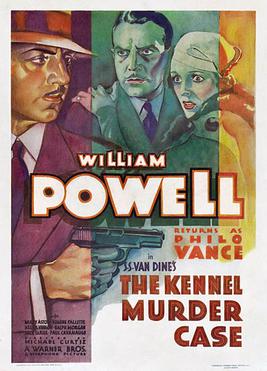 Sometimes the assistance of B in his own death is accidental. There’s a sub-gambit of this that I’ve given its own name: the
Sometimes the assistance of B in his own death is accidental. There’s a sub-gambit of this that I’ve given its own name: the 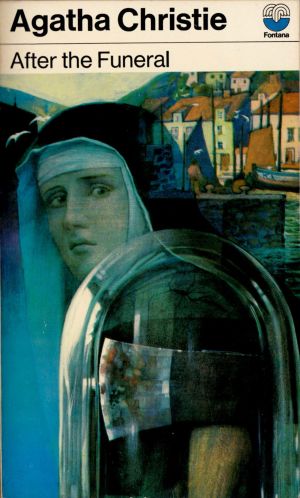 Back in the 1980s, the late mystery novelist
Back in the 1980s, the late mystery novelist 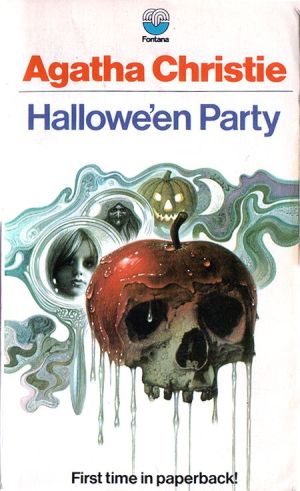 Essentially we gave a single character a crucial fact and told the actor to conceal it by being annoying. A woman with a high squeaky voice who wanted to tell you the details of her recent encounter with aliens; an elderly man with a severe drinking problem and a failed marriage who wanted sympathy. Most of the players weren’t prepared to put in the work to dig that crucial fact out of such an annoying person and tended to encourage their teammates to do so, with greater or lesser success. But you couldn’t solve the case without getting that little fact possessed only by the SEP.
Essentially we gave a single character a crucial fact and told the actor to conceal it by being annoying. A woman with a high squeaky voice who wanted to tell you the details of her recent encounter with aliens; an elderly man with a severe drinking problem and a failed marriage who wanted sympathy. Most of the players weren’t prepared to put in the work to dig that crucial fact out of such an annoying person and tended to encourage their teammates to do so, with greater or lesser success. But you couldn’t solve the case without getting that little fact possessed only by the SEP. Just lately, this has become a big thing in the literary world with the huge success of Paula Hawkins’ 2015 debut novel, The Girl on the Train and 2014’s Gone Girl by Gillian Flynn. Essentially the protagonist represents a situation to be a certain way in the earlier part of the book and then, over the course of the action, reveals that she’s been “lying” to the audience and the truth is quite different. Successful films were made from both these books and seem to have spawned a spate of imitators.
Just lately, this has become a big thing in the literary world with the huge success of Paula Hawkins’ 2015 debut novel, The Girl on the Train and 2014’s Gone Girl by Gillian Flynn. Essentially the protagonist represents a situation to be a certain way in the earlier part of the book and then, over the course of the action, reveals that she’s been “lying” to the audience and the truth is quite different. Successful films were made from both these books and seem to have spawned a spate of imitators. In GAD, of course, this concept is represented by the magnificent novel by Agatha Christie, The Murder of Roger Ackroyd (1926) and the equally clever The Beast Must Die by Nicholas Blake (1938).
In GAD, of course, this concept is represented by the magnificent novel by Agatha Christie, The Murder of Roger Ackroyd (1926) and the equally clever The Beast Must Die by Nicholas Blake (1938).
 A situation is outlined that contains a supernatural or creepy element; something that tends to keep people away from a certain building, or area, or room. It might be the rumour of a ghost or other monster. Upon investigation, it turns out that the supernatural element has been deliberately falsified and bolstered so as to keep people away from a criminal activity. “And I would have gotten away with it too, if it hadn’t been
A situation is outlined that contains a supernatural or creepy element; something that tends to keep people away from a certain building, or area, or room. It might be the rumour of a ghost or other monster. Upon investigation, it turns out that the supernatural element has been deliberately falsified and bolstered so as to keep people away from a criminal activity. “And I would have gotten away with it too, if it hadn’t been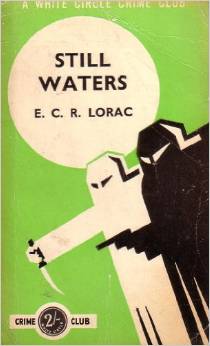 for you meddling kids!” In other words, every single episode of the cartoon Scooby-Doo, Where Are You? and its sequelae, but also many different novels by writers like John Dickson Carr (many times, but I like 1934’s The Plague Court Murders and 1947’s The Sleeping Sphinx). Carr had a stronger emphasis on the supernatural; other practitioners created less spooky and more outright threatening situations to cover crimes like smuggling, such as E.C.R. Lorac’s Still Waters (1949) and Patricia Wentworth’s The Catherine Wheel (also 1949).
for you meddling kids!” In other words, every single episode of the cartoon Scooby-Doo, Where Are You? and its sequelae, but also many different novels by writers like John Dickson Carr (many times, but I like 1934’s The Plague Court Murders and 1947’s The Sleeping Sphinx). Carr had a stronger emphasis on the supernatural; other practitioners created less spooky and more outright threatening situations to cover crimes like smuggling, such as E.C.R. Lorac’s Still Waters (1949) and Patricia Wentworth’s The Catherine Wheel (also 1949). I know my friends and fellow GAD enthusiasts are champing at the bit to tell me their own gambits. Feel free, with appropriate spoiler warnings. I would suggest that a “gambit” per se is something that’s used in more than one book and by more than one author, but I’ll be interested to know your thoughts. If I’ve gone wrong, feel free to say so. And if you have a better title for one of my gambits, I’d love to hear it!!
I know my friends and fellow GAD enthusiasts are champing at the bit to tell me their own gambits. Feel free, with appropriate spoiler warnings. I would suggest that a “gambit” per se is something that’s used in more than one book and by more than one author, but I’ll be interested to know your thoughts. If I’ve gone wrong, feel free to say so. And if you have a better title for one of my gambits, I’d love to hear it!!
 In fact I have now consolidated my household to such an extent that ALL my books — and believe me, that’s a lot of books — are now within 30 feet of each other in what I have started to think of as their “forever home”. They’re still in boxes, but I’m commissioning someone to build me bookshelves and, as a special treat, library ladders.
In fact I have now consolidated my household to such an extent that ALL my books — and believe me, that’s a lot of books — are now within 30 feet of each other in what I have started to think of as their “forever home”. They’re still in boxes, but I’m commissioning someone to build me bookshelves and, as a special treat, library ladders. In the meantime, all I have to do is reach into a box and draw out a handful of blog-worthy volumes very nearly at random. My first such lucky dip contained six paperbacks by E.C.R. Lorac, so there’s that to which to look forward … so my next blog post will almost certainly be on Case in the Clinic, a 1941 novel of which I have a rather nice paperback edition from Collins White Circle Canada.
In the meantime, all I have to do is reach into a box and draw out a handful of blog-worthy volumes very nearly at random. My first such lucky dip contained six paperbacks by E.C.R. Lorac, so there’s that to which to look forward … so my next blog post will almost certainly be on Case in the Clinic, a 1941 novel of which I have a rather nice paperback edition from Collins White Circle Canada. So thank you for your patience, and I’ll be up and blogging with much greater regularity soon! Thanks to all my blog friends for continuing to entertain and inform me during a period where I had no time to read much … you helped me make my reading time count, and I’m grateful.
So thank you for your patience, and I’ll be up and blogging with much greater regularity soon! Thanks to all my blog friends for continuing to entertain and inform me during a period where I had no time to read much … you helped me make my reading time count, and I’m grateful. A little more than two years ago, I published a not-very-serious piece about zucchinis in murder mysteries. You can find it
A little more than two years ago, I published a not-very-serious piece about zucchinis in murder mysteries. You can find it 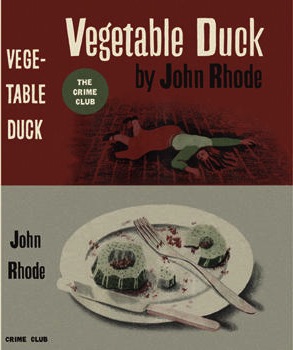 Well, in that post, I suggested that I wasn’t aware of any specialized tool with which to do that job and, gentle reader, now I am. The illustration nearby is of a zucchini corer that you can currently acquire on Amazon for a fairly reasonable price.
Well, in that post, I suggested that I wasn’t aware of any specialized tool with which to do that job and, gentle reader, now I am. The illustration nearby is of a zucchini corer that you can currently acquire on Amazon for a fairly reasonable price.
 I’ve already had quite a bit to say about a couple of his books:
I’ve already had quite a bit to say about a couple of his books: 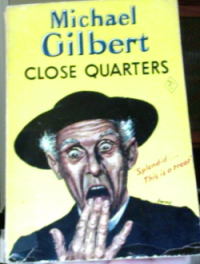 There are at least three different types of story that Gilbert writes; the trouble is, it’s not easy to boil them down into categories with succinct and tidy labels, at least for me. As well, Gilbert didn’t usually write long series of books; the most in a series is six. He’s one of the few writers who attracts my attention with a volume of short stories. It’s kind of a peculiarity of mine — I’m just not all that interested in other authors’ short stories because usually they’re written to make or illustrate a single point, and once I get it, there’s no more flavour. But Gilbert writes volumes of linked stories and they seem to carry a full-length narrative for me. Anyway, he has a few series, lots of non-series novels, and volumes of short stories. To quote Martin Edwards, “He is never dull, he never writes the same book twice.” The story types are anything but rigid; it’s more like he has a couple of preoccupations that show up in many of his novels (the law, for instance, and struggling against injustice) and then he’s wonderfully inventive and inter-relative about the rest.
There are at least three different types of story that Gilbert writes; the trouble is, it’s not easy to boil them down into categories with succinct and tidy labels, at least for me. As well, Gilbert didn’t usually write long series of books; the most in a series is six. He’s one of the few writers who attracts my attention with a volume of short stories. It’s kind of a peculiarity of mine — I’m just not all that interested in other authors’ short stories because usually they’re written to make or illustrate a single point, and once I get it, there’s no more flavour. But Gilbert writes volumes of linked stories and they seem to carry a full-length narrative for me. Anyway, he has a few series, lots of non-series novels, and volumes of short stories. To quote Martin Edwards, “He is never dull, he never writes the same book twice.” The story types are anything but rigid; it’s more like he has a couple of preoccupations that show up in many of his novels (the law, for instance, and struggling against injustice) and then he’s wonderfully inventive and inter-relative about the rest. So think of these as loose ways to organize Gilbert’s work. As I’ve said, there are preoccupations — the law, justice, courtroom drama, triumph of the little man — and a few types. The three main types I’ve noticed are:
So think of these as loose ways to organize Gilbert’s work. As I’ve said, there are preoccupations — the law, justice, courtroom drama, triumph of the little man — and a few types. The three main types I’ve noticed are: Flash Point (1974). Against great odds. The one veers into the political thriller territory but really is the story of a pugnacious little guy who decides to hold a union official to account for a few hundred pounds and ends up bringing down the British government. Part courtroom thriller, part political thriller, and just a good story with a nice twist at the end.
Flash Point (1974). Against great odds. The one veers into the political thriller territory but really is the story of a pugnacious little guy who decides to hold a union official to account for a few hundred pounds and ends up bringing down the British government. Part courtroom thriller, part political thriller, and just a good story with a nice twist at the end.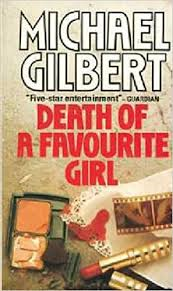 Death of a Favourite Girl (1980). Puzzle mystery. Also published as The Killing of Katie Steelstock. A fairly traditional puzzle mystery about the brutal killing of a young TV star who is visiting her home village. Part police procedural, part courtroom thriller, and with some very modern undercurrents that must have been quite risqué for 1980. With a surprising but exquisitely foreshadowed twist ending.
Death of a Favourite Girl (1980). Puzzle mystery. Also published as The Killing of Katie Steelstock. A fairly traditional puzzle mystery about the brutal killing of a young TV star who is visiting her home village. Part police procedural, part courtroom thriller, and with some very modern undercurrents that must have been quite risqué for 1980. With a surprising but exquisitely foreshadowed twist ending. The Doors Open (1949). Against great odds. Although this one has many of Gilbert’s recurring themes (part courtroom drama, part corporate thriller, part political thriller); essentially the story of an evil person who seeks a long, long revenge and is ultimately thwarted by a good man who wants to see justice done. A very satisfying ending.
The Doors Open (1949). Against great odds. Although this one has many of Gilbert’s recurring themes (part courtroom drama, part corporate thriller, part political thriller); essentially the story of an evil person who seeks a long, long revenge and is ultimately thwarted by a good man who wants to see justice done. A very satisfying ending.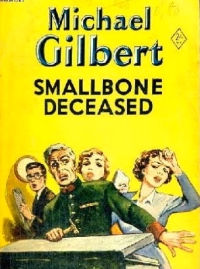 Smallbone Deceased (1950). Puzzle mystery. Often said to be Gilbert’s finest achievement; certainly it’s got everything you could want in a puzzle mystery. Inspector Hazelrigg investigates the case of a body found in a deed box in a staid and old-fashioned solicitor’s office. You understand the people, you are taught the routines of the daily grind of a solicitor’s office in a painless and intelligent way, and there’s a legal trick that you won’t see coming that underlies a major plot thread. I suspect the ending will surprise you very much; it’s logical but difficult to get to unaided.
Smallbone Deceased (1950). Puzzle mystery. Often said to be Gilbert’s finest achievement; certainly it’s got everything you could want in a puzzle mystery. Inspector Hazelrigg investigates the case of a body found in a deed box in a staid and old-fashioned solicitor’s office. You understand the people, you are taught the routines of the daily grind of a solicitor’s office in a painless and intelligent way, and there’s a legal trick that you won’t see coming that underlies a major plot thread. I suspect the ending will surprise you very much; it’s logical but difficult to get to unaided. They Never Looked Inside (1948). Also published as He Didn’t Mind Danger. Part detective story, part against great odds. Major McCann decides to help out Inspector Hazelrigg in the problem of ex-servicemen who are being recruited to commit crimes, and thereby runs up against a huge and vicious criminal organization.
They Never Looked Inside (1948). Also published as He Didn’t Mind Danger. Part detective story, part against great odds. Major McCann decides to help out Inspector Hazelrigg in the problem of ex-servicemen who are being recruited to commit crimes, and thereby runs up against a huge and vicious criminal organization. Death Has Deep Roots (1951). Puzzle mystery with a strong thread of courtroom drama. It’s the story of Victoria Lamartine, who was in France during WW2 and became pregnant; her handsome young Lieutenant Wells gets killed by the Germans. Vicky is also taken prisoner and her child disappears. She thinks the Lieutenant’s superior officer, Major Thoseby, might know what happened and spends years trying to find him after the war; she does, and he is murdered. The book details the courtroom process of her solicitors trying to defend her against that prosecution. I think this is an exceptional book and well worth your time if you like courtroom drama.
Death Has Deep Roots (1951). Puzzle mystery with a strong thread of courtroom drama. It’s the story of Victoria Lamartine, who was in France during WW2 and became pregnant; her handsome young Lieutenant Wells gets killed by the Germans. Vicky is also taken prisoner and her child disappears. She thinks the Lieutenant’s superior officer, Major Thoseby, might know what happened and spends years trying to find him after the war; she does, and he is murdered. The book details the courtroom process of her solicitors trying to defend her against that prosecution. I think this is an exceptional book and well worth your time if you like courtroom drama.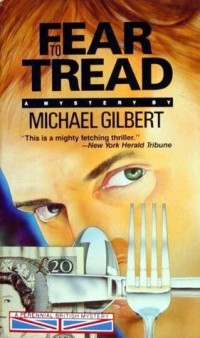 Fear To Tread (1953). Against great odds. This is the final Inspector Hazelrigg story but really it’s an “against great odds” story; Mr. Wetherall, headmaster of a boys’ secondary school, uncovers a large-scale black market operation and volunteers to assist the police in breaking it up. Mr. Wetherall is a delightful character and the twist in the ending is very satisfying.
Fear To Tread (1953). Against great odds. This is the final Inspector Hazelrigg story but really it’s an “against great odds” story; Mr. Wetherall, headmaster of a boys’ secondary school, uncovers a large-scale black market operation and volunteers to assist the police in breaking it up. Mr. Wetherall is a delightful character and the twist in the ending is very satisfying.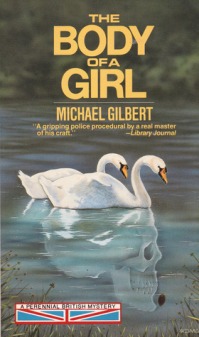 The Body of a Girl (1972). Puzzle mystery with overtones of the police procedural. Detective Chief Inspector Mercer is a hard man who comes to Stoneferry upon his promotion to DCI and leads the investigation of a corpse found in a well-known lovers’ lane. He also solves a couple of other crimes, some of which will surprise the reader. Mercer is a fascinating protagonist who has more to his character than is immediately obvious; a very satisfying ending.
The Body of a Girl (1972). Puzzle mystery with overtones of the police procedural. Detective Chief Inspector Mercer is a hard man who comes to Stoneferry upon his promotion to DCI and leads the investigation of a corpse found in a well-known lovers’ lane. He also solves a couple of other crimes, some of which will surprise the reader. Mercer is a fascinating protagonist who has more to his character than is immediately obvious; a very satisfying ending. Blood and Judgment (1959). Puzzle mystery. Inspector Petrella, in a full-length outing for once, investigates crimes for which one Boot Howton, a habitual criminal, is on trial. Petrella angers his superiors by coming up with an entirely unexpected line of inquiry into certain of the crimes and an entirely unsuspected criminal.
Blood and Judgment (1959). Puzzle mystery. Inspector Petrella, in a full-length outing for once, investigates crimes for which one Boot Howton, a habitual criminal, is on trial. Petrella angers his superiors by coming up with an entirely unexpected line of inquiry into certain of the crimes and an entirely unsuspected criminal.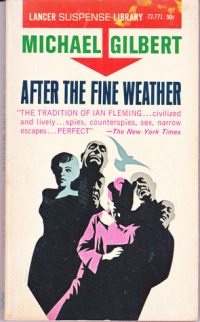 After the Fine Weather (1963). Political thriller. I’m not fond of this style of story and yet couldn’t stop reading this one; a young woman finds herself in danger because she is the only eyewitness to a secret about a political assassination in the Tyrol. Full of double and triple crosses and harsh political realities, a fast-moving story with plenty of excitement.
After the Fine Weather (1963). Political thriller. I’m not fond of this style of story and yet couldn’t stop reading this one; a young woman finds herself in danger because she is the only eyewitness to a secret about a political assassination in the Tyrol. Full of double and triple crosses and harsh political realities, a fast-moving story with plenty of excitement. Death in Captivity (1952). Also published as The Danger Within. Puzzle mystery. One of my favourite of all Gilbert’s novels, this is the story of a murder among Allied prisoners in an Italian prisoner-of-war camp in WW2. I don’t remember ever reading anything that seemed to be so accurate about the details of everyday life in a prison camp, while still providing fascinating material about who might kill a prisoner and why. My only quibble with this book is that the final sixth of the book has quite a different tone and approach than the rest of the book, and I found it somewhat jarring. The solution, though, is excellent. You’ll note from the Pan tie-in edition I’ve chosen to illustrate this that it was made into a film … which I haven’t yet found.
Death in Captivity (1952). Also published as The Danger Within. Puzzle mystery. One of my favourite of all Gilbert’s novels, this is the story of a murder among Allied prisoners in an Italian prisoner-of-war camp in WW2. I don’t remember ever reading anything that seemed to be so accurate about the details of everyday life in a prison camp, while still providing fascinating material about who might kill a prisoner and why. My only quibble with this book is that the final sixth of the book has quite a different tone and approach than the rest of the book, and I found it somewhat jarring. The solution, though, is excellent. You’ll note from the Pan tie-in edition I’ve chosen to illustrate this that it was made into a film … which I haven’t yet found. Paint, Gold & Blood (1989). Against great odds. I didn’t find the story of art smuggling all that fascinating, but there’s a wonderful process whereby two schoolboys get their revenge upon a cruel schoolmaster/churchman that is delightful, and there’s a business idea that’s probably worth doing to this day. The portrait of the brilliant young man who invents the idea is the centrepiece of the book; it’s a bit like Young Sherlock and Young Watson. There’s also a use of Samuel Pepys’ personal shorthand as a way of transmitting confidential information; many things to like about this book even if the art smuggling isn’t of much interest.
Paint, Gold & Blood (1989). Against great odds. I didn’t find the story of art smuggling all that fascinating, but there’s a wonderful process whereby two schoolboys get their revenge upon a cruel schoolmaster/churchman that is delightful, and there’s a business idea that’s probably worth doing to this day. The portrait of the brilliant young man who invents the idea is the centrepiece of the book; it’s a bit like Young Sherlock and Young Watson. There’s also a use of Samuel Pepys’ personal shorthand as a way of transmitting confidential information; many things to like about this book even if the art smuggling isn’t of much interest. Sky High (1955). Also published as The Country-House Burglar. Puzzle mystery. This is a story that John Rhode would have tackled but didn’t have the writing skill to bring to life; essentially a howdunit about a mysterious ex-Army type in a small village whose house explodes one summer night. It’s the characterization and dialogue that make this story the enjoyable book it is. I found the final chapter delightful; it ties off some loose ends in a very happy ending indeed.
Sky High (1955). Also published as The Country-House Burglar. Puzzle mystery. This is a story that John Rhode would have tackled but didn’t have the writing skill to bring to life; essentially a howdunit about a mysterious ex-Army type in a small village whose house explodes one summer night. It’s the characterization and dialogue that make this story the enjoyable book it is. I found the final chapter delightful; it ties off some loose ends in a very happy ending indeed. Stay of Execution and Other Stories of Legal Practice (1971). This is a set of short stories all of which are linked by the practice of law; some courtroom drama, some less than perfect lawyers, et cetera. Only a few of these are simple stories done to illustrate a point; more often than not they are complicated tales that lead you in one direction and then take you to a startling realization in a very satisfying way. Gilbert was, of course, a lawyer in active practice. Some of these stories will only really be satisfying to people who work in that profession, but they will be very satisfied indeed.
Stay of Execution and Other Stories of Legal Practice (1971). This is a set of short stories all of which are linked by the practice of law; some courtroom drama, some less than perfect lawyers, et cetera. Only a few of these are simple stories done to illustrate a point; more often than not they are complicated tales that lead you in one direction and then take you to a startling realization in a very satisfying way. Gilbert was, of course, a lawyer in active practice. Some of these stories will only really be satisfying to people who work in that profession, but they will be very satisfied indeed. The 92nd Tiger (1973). Political thriller. As I noted above, I’m an unlikely customer for this sort of novel but found it engaging and very readable. It’s the story of Hugo Greest, a TV actor who is the lead in a series about The Tiger, a karate-chopping womanizing spy. Just as his series comes to its end, Greest is offered a job by the leader of a small Persian Gulf country recently enriched by the discovery of a rare mineral; he is to equip and train a small army for the Ruler. Since he actually speaks Arabic this is not outrageously unreasonable. There’s a plot to supplant the Ruler and Greest, against great odds, stops the coup, rescues the Heir, and gets the girl. Not a shred of reality here, more like an extremely good-humoured James Bond novel or a very hard-hitting Dick Francis novel, but funny and gruesome by turns, and it held my attention.
The 92nd Tiger (1973). Political thriller. As I noted above, I’m an unlikely customer for this sort of novel but found it engaging and very readable. It’s the story of Hugo Greest, a TV actor who is the lead in a series about The Tiger, a karate-chopping womanizing spy. Just as his series comes to its end, Greest is offered a job by the leader of a small Persian Gulf country recently enriched by the discovery of a rare mineral; he is to equip and train a small army for the Ruler. Since he actually speaks Arabic this is not outrageously unreasonable. There’s a plot to supplant the Ruler and Greest, against great odds, stops the coup, rescues the Heir, and gets the girl. Not a shred of reality here, more like an extremely good-humoured James Bond novel or a very hard-hitting Dick Francis novel, but funny and gruesome by turns, and it held my attention. The Empty House (1979). Political thriller and against great odds. Young Peter Manciple is an inexperienced insurance adjuster assigned to investigate the death of a policy-holder whose car went over a cliff. This turns out to be merely the tip of the iceberg and lead to a plot involving international intrigue, romance, and biological warfare. It’s certainly an interesting story but I found the ending not quite up to Gilbert’s usual desire to leave the reader happy and satisfied; this is a little depressing and squalid.
The Empty House (1979). Political thriller and against great odds. Young Peter Manciple is an inexperienced insurance adjuster assigned to investigate the death of a policy-holder whose car went over a cliff. This turns out to be merely the tip of the iceberg and lead to a plot involving international intrigue, romance, and biological warfare. It’s certainly an interesting story but I found the ending not quite up to Gilbert’s usual desire to leave the reader happy and satisfied; this is a little depressing and squalid. The Final Throw (1982). Also published as End-Game. Against great odds. A young and rather dissolute Welshman goes undercover as a fairly incompetent tour guide around Europe in order to expose drug trafficking and organized crime. The stakes become very high when he must locate a down-and-out drug addicted vagrant who has some incriminating documents.
The Final Throw (1982). Also published as End-Game. Against great odds. A young and rather dissolute Welshman goes undercover as a fairly incompetent tour guide around Europe in order to expose drug trafficking and organized crime. The stakes become very high when he must locate a down-and-out drug addicted vagrant who has some incriminating documents.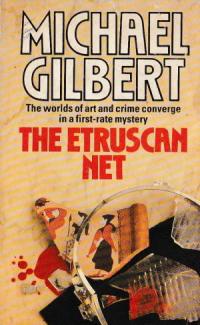 The Etruscan Net (1960). Puzzle mystery with a little bit of everything. Robert Broke is an Englishman in Florence running a small gallery. After touching on a potential case of forgery of Etruscan antiques, he finds himself up against the local Mafia and a ring of spies, and is soon on trial for manslaughter. A brilliant Italian defence lawyer solves the case and ties off all the loose ends. The Florentine background is interesting and it’s clear that Gilbert had some experience there.
The Etruscan Net (1960). Puzzle mystery with a little bit of everything. Robert Broke is an Englishman in Florence running a small gallery. After touching on a potential case of forgery of Etruscan antiques, he finds himself up against the local Mafia and a ring of spies, and is soon on trial for manslaughter. A brilliant Italian defence lawyer solves the case and ties off all the loose ends. The Florentine background is interesting and it’s clear that Gilbert had some experience there. The Night of the Twelfth (1976). Puzzle mystery and one of the most frightening books I’ve ever read — it’s about a serial killer who tortures, rapes, and murders young boys. The main part of the book takes place in the milieu of Trenchard House School, a boys’ school; a few senior boys and junior masters are the principal characters. Gilbert ably threads the difficulties of a very serious underlying plot and lifts the boys’ characters far, far above the Boys’ Own Paper level, helped by one who is the son of the Israeli ambassador and is accustomed to violence. A surprisingly intelligent book with a horrifying ending that had me on the edge of my chair.
The Night of the Twelfth (1976). Puzzle mystery and one of the most frightening books I’ve ever read — it’s about a serial killer who tortures, rapes, and murders young boys. The main part of the book takes place in the milieu of Trenchard House School, a boys’ school; a few senior boys and junior masters are the principal characters. Gilbert ably threads the difficulties of a very serious underlying plot and lifts the boys’ characters far, far above the Boys’ Own Paper level, helped by one who is the son of the Israeli ambassador and is accustomed to violence. A surprisingly intelligent book with a horrifying ending that had me on the edge of my chair. Ring of Terror (1995). Political thriller and much more. I wanted to end this on a high note; before this year I hadn’t read any of the three novels in a series about Luke Pagan and Joe Narrabone, and so I only obtained the first one, Ring of Terror. It’s my best discovery of any of this bunch, almost all of which I had read before — just a great novel. It’s a historical novel set in 1913 about young Luke Pagan whose knowledge of Russian makes him extremely valuable to the Metropolitan Police (and to the Home Secretary, one Winston Churchill). Pagan is set to investigate Russian immigrants; some anarchists, some merely criminals, and some entirely innocent — the stakes are very, very high and the story is exciting. I thought as I was midway through the book that this is the type of story that Gilbert was born to write. His command of the period is sufficient to convince me he’s done his research; we know the outlines of the politics involved but, like Churchill’s role, there will be much here that is new to the reader. Gilbert was not afraid to talk about the nasty, violent, and squalid as part of where he had to go with this book, and it’s a rather brutal reality for the protagonist, but it made for a fine and exciting story. Plot, characterization, and writing are all excellent. If I’d ever done a “Top 10 Michael Gilbert novels” list I would have had to revise it all downwards after finding this gem.
Ring of Terror (1995). Political thriller and much more. I wanted to end this on a high note; before this year I hadn’t read any of the three novels in a series about Luke Pagan and Joe Narrabone, and so I only obtained the first one, Ring of Terror. It’s my best discovery of any of this bunch, almost all of which I had read before — just a great novel. It’s a historical novel set in 1913 about young Luke Pagan whose knowledge of Russian makes him extremely valuable to the Metropolitan Police (and to the Home Secretary, one Winston Churchill). Pagan is set to investigate Russian immigrants; some anarchists, some merely criminals, and some entirely innocent — the stakes are very, very high and the story is exciting. I thought as I was midway through the book that this is the type of story that Gilbert was born to write. His command of the period is sufficient to convince me he’s done his research; we know the outlines of the politics involved but, like Churchill’s role, there will be much here that is new to the reader. Gilbert was not afraid to talk about the nasty, violent, and squalid as part of where he had to go with this book, and it’s a rather brutal reality for the protagonist, but it made for a fine and exciting story. Plot, characterization, and writing are all excellent. If I’d ever done a “Top 10 Michael Gilbert novels” list I would have had to revise it all downwards after finding this gem.
 It may well be that I’ve been concealing my reading habits from my friends and blog followers. It’s true that I’m relatively lazy about writing blog posts about books I’ve been reading, at least compared to other bloggers; I’m always astonished that my fellow bloggers can come up with so many interesting things to say every 48 hours or so. And I thank them for it.
It may well be that I’ve been concealing my reading habits from my friends and blog followers. It’s true that I’m relatively lazy about writing blog posts about books I’ve been reading, at least compared to other bloggers; I’m always astonished that my fellow bloggers can come up with so many interesting things to say every 48 hours or so. And I thank them for it. That doesn’t mean, however, that I haven’t been reading. My actual reading rate is at least a book a day, every day, and quite a bit of it in areas that would be of little or no interest to my readers — heritage cookbooks, for instance. I’m currently going through a lot of self-published zombie apocalypse novels, pandemic stories, and others in the EOTWAWKI/SHTF genre; my interest in
That doesn’t mean, however, that I haven’t been reading. My actual reading rate is at least a book a day, every day, and quite a bit of it in areas that would be of little or no interest to my readers — heritage cookbooks, for instance. I’m currently going through a lot of self-published zombie apocalypse novels, pandemic stories, and others in the EOTWAWKI/SHTF genre; my interest in  Erle Stanley Gardner, The Case of the Queenly Contestant (1967). The last few Perry Mason novels are the most difficult to lay your hands on in paperback, and if you’re interested in courtroom drama they may be the last titles you tick off your list. I buy them when I see them … this one is not all that gripping, and there’s elements of the story that seem to be recycled from ESG’s earlier books. Although, as I’ve noticed before, Gardner always has something to teach us. (This time it’s the apparent tendency of hotel-based cat burglars to strike while the hotel guests are in the bathtub, because nudity inhibits the desire to chase thieves.)
Erle Stanley Gardner, The Case of the Queenly Contestant (1967). The last few Perry Mason novels are the most difficult to lay your hands on in paperback, and if you’re interested in courtroom drama they may be the last titles you tick off your list. I buy them when I see them … this one is not all that gripping, and there’s elements of the story that seem to be recycled from ESG’s earlier books. Although, as I’ve noticed before, Gardner always has something to teach us. (This time it’s the apparent tendency of hotel-based cat burglars to strike while the hotel guests are in the bathtub, because nudity inhibits the desire to chase thieves.)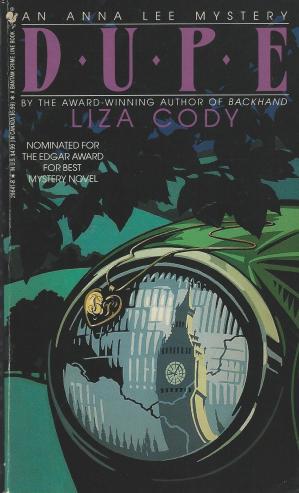 Liza Cody, Dupe (1981). The very interesting Anna Lee is a British private investigator and all six of the books in the series are worth your time; this is the one that got the ball rolling. Anna is tough and yet vulnerable, and she was those things before it became a cliche of the female PI novel. Her debut case involves investigating a fatal car accident that proves to be connected to a ring of Hollywood film pirates. Beautifully written, a terse and intelligent writing style, and an interesting plot. If you like these, seek out Cody’s other series, three outstanding books about security guard (and amateur wrestler) Eva Wylie.
Liza Cody, Dupe (1981). The very interesting Anna Lee is a British private investigator and all six of the books in the series are worth your time; this is the one that got the ball rolling. Anna is tough and yet vulnerable, and she was those things before it became a cliche of the female PI novel. Her debut case involves investigating a fatal car accident that proves to be connected to a ring of Hollywood film pirates. Beautifully written, a terse and intelligent writing style, and an interesting plot. If you like these, seek out Cody’s other series, three outstanding books about security guard (and amateur wrestler) Eva Wylie.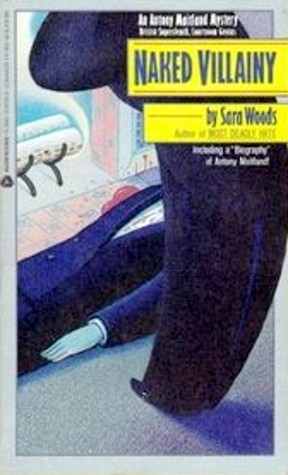 Sara Woods, Naked Villainy (1987). The final entry in the 48 books chronicling the adventures of British barrister Antony Maitland, this was published two years after the author’s death. I have often complained about the tendency about elderly authors to write lousy books near the end of their careers; this one is not as bad as all that, but there is rather a lack of tension and excitement. (I note that the author was exactly my age when she wrote this, so obviously it’s not senility LOL.) Woods is an engaging writer who focuses on character nearly as much as plot; the books usually contain an extended courtroom scene and that’s clearly the author’s major interest. This particular story is a rather muddled tale of witchcraft rituals in a wine cellar.
Sara Woods, Naked Villainy (1987). The final entry in the 48 books chronicling the adventures of British barrister Antony Maitland, this was published two years after the author’s death. I have often complained about the tendency about elderly authors to write lousy books near the end of their careers; this one is not as bad as all that, but there is rather a lack of tension and excitement. (I note that the author was exactly my age when she wrote this, so obviously it’s not senility LOL.) Woods is an engaging writer who focuses on character nearly as much as plot; the books usually contain an extended courtroom scene and that’s clearly the author’s major interest. This particular story is a rather muddled tale of witchcraft rituals in a wine cellar.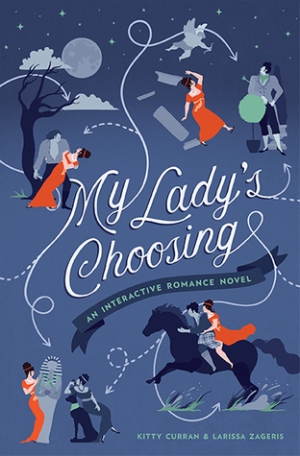 Kitty Curran and Larissa Zageris, My Lady’s Choosing (2018). I picked up this e-book because it was such a peculiar idea; it’s a “Choose your own adventure” type of interactive novel, but with the storyline of a Regency romance. A distinctly modern Regency romance, frankly, because the heroine seems to spend a lot of time moaning with pleasure as the baronet presses his straining manhood against her crinoline, or something. The joke rather palls after a few minutes, I found, but then I don’t read Regency romances at all. This may be gentle mockery or bitter send-up, I can’t be sure.
Kitty Curran and Larissa Zageris, My Lady’s Choosing (2018). I picked up this e-book because it was such a peculiar idea; it’s a “Choose your own adventure” type of interactive novel, but with the storyline of a Regency romance. A distinctly modern Regency romance, frankly, because the heroine seems to spend a lot of time moaning with pleasure as the baronet presses his straining manhood against her crinoline, or something. The joke rather palls after a few minutes, I found, but then I don’t read Regency romances at all. This may be gentle mockery or bitter send-up, I can’t be sure. Ellery Adams, Murder in the Locked Library (2018). Honestly, I don’t know what to make of this one. Adams is by all accounts an extremely popular writer, at the level of the New York Times bestseller list; I’m willing to believe she writes something that the public wants to read. But this is way beyond the slight suspension of belief I associate with the modern cupcake cozy. This is out-and-out fantasy. There’s a mysterious semi-rural hotel that’s like a castle and spa designed to attract bibliophiles; a secret society that’s protected the hotel’s secrets for centuries; and every other aspect of a woman’s fantasy that you might expect, including wonderful gourmet food, a castle filled with dedicated servants, a village filled with charming shopkeepers and handsome attentive single males, and the protagonist’s delightful twin teenage boys. It’s actually leading me to think that there might be something going on within the cupcake cozy after all — this is on the level of the literary school of magical realism. So this is either really, really good or really, really bad. I do know that it’s not meant to appeal to me in the slightest since there is almost no logic or rigour to what’s going on here. The mystery plot is nonsensical and mercifully brief; almost there merely to serve as a
Ellery Adams, Murder in the Locked Library (2018). Honestly, I don’t know what to make of this one. Adams is by all accounts an extremely popular writer, at the level of the New York Times bestseller list; I’m willing to believe she writes something that the public wants to read. But this is way beyond the slight suspension of belief I associate with the modern cupcake cozy. This is out-and-out fantasy. There’s a mysterious semi-rural hotel that’s like a castle and spa designed to attract bibliophiles; a secret society that’s protected the hotel’s secrets for centuries; and every other aspect of a woman’s fantasy that you might expect, including wonderful gourmet food, a castle filled with dedicated servants, a village filled with charming shopkeepers and handsome attentive single males, and the protagonist’s delightful twin teenage boys. It’s actually leading me to think that there might be something going on within the cupcake cozy after all — this is on the level of the literary school of magical realism. So this is either really, really good or really, really bad. I do know that it’s not meant to appeal to me in the slightest since there is almost no logic or rigour to what’s going on here. The mystery plot is nonsensical and mercifully brief; almost there merely to serve as a  Anthony Berkeley, Roger Sheringham and the Vane Mystery (1927). Amateur sleuth and well-known silly ass Roger Sheringham travels to Hampshire on behalf of the Daily Courier to investigate what looks like the accidental death of Mrs. Vane. Roger’s cousin Anthony follows along and promptly falls in love with the principal suspect; Inspector Moresby keeps his nose to the grindstone and solves the case. Berkeley is famous for his revisionist takes on the Golden Age traditions of the traditional puzzle mystery; this is yet another one of his exercises about the “most likely suspect” being the “least likely suspect” and therefore the “most likely suspect”. I love Berkeley in general for his brilliance, and his sense of intellectual humour, but some of his books are more for the scholar than the reader; this one is Berkeley arching his eyebrow at some mystery cliches and coming up with a surprise ending that you didn’t expect. Here’s the final lines of the book, which sums it up for me: [Inspector Moresby saying to Roger Sheringham] “Do you know what’s the matter with you, sir?” he said kindly. “You’ve been reading too many of those detective stories.” So, apparently, had Berkeley.
Anthony Berkeley, Roger Sheringham and the Vane Mystery (1927). Amateur sleuth and well-known silly ass Roger Sheringham travels to Hampshire on behalf of the Daily Courier to investigate what looks like the accidental death of Mrs. Vane. Roger’s cousin Anthony follows along and promptly falls in love with the principal suspect; Inspector Moresby keeps his nose to the grindstone and solves the case. Berkeley is famous for his revisionist takes on the Golden Age traditions of the traditional puzzle mystery; this is yet another one of his exercises about the “most likely suspect” being the “least likely suspect” and therefore the “most likely suspect”. I love Berkeley in general for his brilliance, and his sense of intellectual humour, but some of his books are more for the scholar than the reader; this one is Berkeley arching his eyebrow at some mystery cliches and coming up with a surprise ending that you didn’t expect. Here’s the final lines of the book, which sums it up for me: [Inspector Moresby saying to Roger Sheringham] “Do you know what’s the matter with you, sir?” he said kindly. “You’ve been reading too many of those detective stories.” So, apparently, had Berkeley. Nova Jacobs, The Last Equation of Isaac Severy (2018). The subtitle is “A Novel in Clues” and I think that’s the signal that this is some sort of merging of the traditional detective novel with … I’m not sure. Post-modernism? Some sort of highfalutin’ literary movement with which I’m not familiar. It’s as though Raymond Chandler had been asked to write a story about a group of advanced theoretical mathematicians and physicists but not been given all the facts until too late. An elderly scientist dies and members of his family hunt for his final equation; the search takes them to many strange locations, including within themselves, I think. I really did want to find out what happened and persevered, but I’m not sure the ending was worth the effort. None of this could really have happened, which brings me back to the same idea of magical realism.
Nova Jacobs, The Last Equation of Isaac Severy (2018). The subtitle is “A Novel in Clues” and I think that’s the signal that this is some sort of merging of the traditional detective novel with … I’m not sure. Post-modernism? Some sort of highfalutin’ literary movement with which I’m not familiar. It’s as though Raymond Chandler had been asked to write a story about a group of advanced theoretical mathematicians and physicists but not been given all the facts until too late. An elderly scientist dies and members of his family hunt for his final equation; the search takes them to many strange locations, including within themselves, I think. I really did want to find out what happened and persevered, but I’m not sure the ending was worth the effort. None of this could really have happened, which brings me back to the same idea of magical realism. J. V. Turner, Below the Clock (1936); the edition shown contains an informative and useful introduction by David Brawn (whose acumen gets more impressive each time I encounter it). Before I say anything about this novel, I learned from the introduction that Turner also wrote as David Hume, and was as such the king of the British hardboiled thriller for decades; all of a sudden, much more interesting. Here, solicitor-detective Amos Petrie takes on a case of murder within the British House of Commons, where the Chancellor of the Exchequer is poisoned with the exotic substance strophanthin. You don’t need to know much more than that — a traditional detective story populated with men in high places who are not as honest as they should be. There’s a fine ending where the murderer poisons himself on the floor of the House rather than be arrested. All in all this is a rather antiquely-flavoured mystery but it’s logical and smart, with a fascinating background and somewhat exciting plot. Well done, David Brawn and the Detective Story Club at Collins, for unearthing this from obscurity and bringing it back for our enjoyment.
J. V. Turner, Below the Clock (1936); the edition shown contains an informative and useful introduction by David Brawn (whose acumen gets more impressive each time I encounter it). Before I say anything about this novel, I learned from the introduction that Turner also wrote as David Hume, and was as such the king of the British hardboiled thriller for decades; all of a sudden, much more interesting. Here, solicitor-detective Amos Petrie takes on a case of murder within the British House of Commons, where the Chancellor of the Exchequer is poisoned with the exotic substance strophanthin. You don’t need to know much more than that — a traditional detective story populated with men in high places who are not as honest as they should be. There’s a fine ending where the murderer poisons himself on the floor of the House rather than be arrested. All in all this is a rather antiquely-flavoured mystery but it’s logical and smart, with a fascinating background and somewhat exciting plot. Well done, David Brawn and the Detective Story Club at Collins, for unearthing this from obscurity and bringing it back for our enjoyment. I find to my surprise that I have recently acquired enough books by Michael Gilbert as both e-books and paperbacks to devote an entire post to this excellent writer, even in this brief format, and so I’ll save that pleasure for a later time. The more I read of Gilbert the more I come to think that he rarely, if ever, put his literary foot wrong; I’ve enjoyed everything of his large output that I’ve read, and I hope to recommend some of the better ones to you.
I find to my surprise that I have recently acquired enough books by Michael Gilbert as both e-books and paperbacks to devote an entire post to this excellent writer, even in this brief format, and so I’ll save that pleasure for a later time. The more I read of Gilbert the more I come to think that he rarely, if ever, put his literary foot wrong; I’ve enjoyed everything of his large output that I’ve read, and I hope to recommend some of the better ones to you. Saradindu Bandyo-padhyay, Picture Imperfect: and other Byomkesh Bakshi Mysteries (1999 as such; different stories have dates ranging from 1932 to 1952, most from the 1930s). This is a collection of short stories translated from Bengali about the “inquisitor” Byomkesh Bakshi and his assistant/associate Ajit. To me it was clear this is the Bengali take on Sherlock Holmes; everyone else has had a whack at using Sherlock to their own ends, why not make him Bengali? Originally I picked this volume up in an attempt to broaden my cultural horizons, as it were. I found the book interesting because it is clearly immersed in a cultural tradition about which I know little or nothing; many similarities, many differences. Could I solve a mystery from a different cultural tradition? Well, I must say, these are very difficult mysteries, at the “locked-room/impossible crime” level in every case, and I was not enormously successful at figuring out what was going on. (I did solve the story called “The Venom of the Tarantula” and a few others.) Ultimately I didn’t find the collection as fascinating as I had hoped, mostly because the author seems to be constantly flirting with the correlation between Holmes and Bakshi and that joke quickly got tired. Perhaps it’s just that the short-story format means that the stories are told in the same way as Doyle told Holmes stories and that evokes the resemblance. But it might be that the author is, reasonably enough, not writing for a Western audience. Anyway, you may enjoy these; I found them diverting but not a taste I would sustain. I’ve found the Feluda series by Satyajit Ray to be deeper and richer stories in the same vein.
Saradindu Bandyo-padhyay, Picture Imperfect: and other Byomkesh Bakshi Mysteries (1999 as such; different stories have dates ranging from 1932 to 1952, most from the 1930s). This is a collection of short stories translated from Bengali about the “inquisitor” Byomkesh Bakshi and his assistant/associate Ajit. To me it was clear this is the Bengali take on Sherlock Holmes; everyone else has had a whack at using Sherlock to their own ends, why not make him Bengali? Originally I picked this volume up in an attempt to broaden my cultural horizons, as it were. I found the book interesting because it is clearly immersed in a cultural tradition about which I know little or nothing; many similarities, many differences. Could I solve a mystery from a different cultural tradition? Well, I must say, these are very difficult mysteries, at the “locked-room/impossible crime” level in every case, and I was not enormously successful at figuring out what was going on. (I did solve the story called “The Venom of the Tarantula” and a few others.) Ultimately I didn’t find the collection as fascinating as I had hoped, mostly because the author seems to be constantly flirting with the correlation between Holmes and Bakshi and that joke quickly got tired. Perhaps it’s just that the short-story format means that the stories are told in the same way as Doyle told Holmes stories and that evokes the resemblance. But it might be that the author is, reasonably enough, not writing for a Western audience. Anyway, you may enjoy these; I found them diverting but not a taste I would sustain. I’ve found the Feluda series by Satyajit Ray to be deeper and richer stories in the same vein.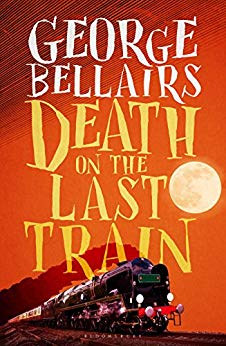 George Bellairs novels. I’ve been reading a lot of these lately since they’ve become available electronically. Detective-Inspector Littlejohn is a pleasant British policeman who works well with his associate, Detective-Sergeant Cromwell, and the stories are innocuous and, if I may say so, not very exciting. I read them last winter thinking that I might get a blog piece out of reading a few dozen and talking about Bellairs as a writer, but stylistically he just doesn’t seem to have much of an authorial voice. I did manage to find Calamity at Harwood (1945) sufficiently interesting, if flawed, to burble on about it
George Bellairs novels. I’ve been reading a lot of these lately since they’ve become available electronically. Detective-Inspector Littlejohn is a pleasant British policeman who works well with his associate, Detective-Sergeant Cromwell, and the stories are innocuous and, if I may say so, not very exciting. I read them last winter thinking that I might get a blog piece out of reading a few dozen and talking about Bellairs as a writer, but stylistically he just doesn’t seem to have much of an authorial voice. I did manage to find Calamity at Harwood (1945) sufficiently interesting, if flawed, to burble on about it 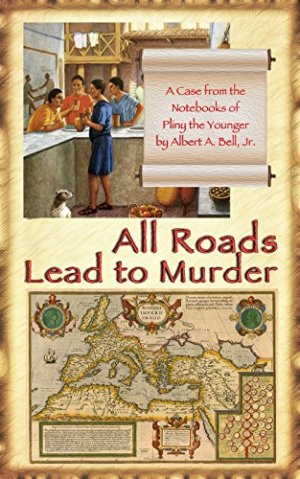 Albert A. Bell, Jr. has written five historical mysteries about Pliny the Younger between 2002 and 2014; I enjoyed the first four quite a bit. All Roads Lead To Murder (2002) might have been a one-off but apparently he was sufficiently motivated to continue with The Blood of Caesar (2008), The Corpus Conundrum (2011), Death in the Ashes (2013) and a volume I have yet to see, The Eyes of Aurora (2014). I rather like mysteries set in ancient times but the authors have to live up to the responsibility to do their research; I understand Bell is a professor of such things and it does show through, but not in an onerous way. If you’ve run out of Steven Saylor, Bell offers a decent alternative.
Albert A. Bell, Jr. has written five historical mysteries about Pliny the Younger between 2002 and 2014; I enjoyed the first four quite a bit. All Roads Lead To Murder (2002) might have been a one-off but apparently he was sufficiently motivated to continue with The Blood of Caesar (2008), The Corpus Conundrum (2011), Death in the Ashes (2013) and a volume I have yet to see, The Eyes of Aurora (2014). I rather like mysteries set in ancient times but the authors have to live up to the responsibility to do their research; I understand Bell is a professor of such things and it does show through, but not in an onerous way. If you’ve run out of Steven Saylor, Bell offers a decent alternative. Stuart Turton‘s The Seven Deaths of Evelyn Hardcastle (2018). I can do no better than quote the author’s elevator pitch for the book. “It’s an Agatha Christie-style murder mystery, but set in a Groundhog Day loop, with a bit of Quantum Leap body-swapping thrown in. Our hero Aiden wakes up every day in the body of a different house guest … but it’s the same day, so he sees the same event from very different perspectives.” So, yeah. Metatextual,
Stuart Turton‘s The Seven Deaths of Evelyn Hardcastle (2018). I can do no better than quote the author’s elevator pitch for the book. “It’s an Agatha Christie-style murder mystery, but set in a Groundhog Day loop, with a bit of Quantum Leap body-swapping thrown in. Our hero Aiden wakes up every day in the body of a different house guest … but it’s the same day, so he sees the same event from very different perspectives.” So, yeah. Metatextual, 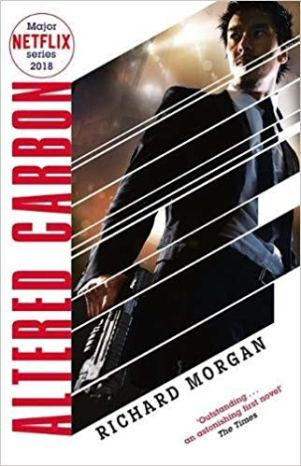 Richard K. Morgan, Altered Carbon (2002). Essentially this is the perfect marriage of cyberpunk and the hard-boiled detective story. Takeshi Kovacs, mercenary soldier, is hired by an extremely wealthy man, Laurens Bancroft, to find out who killed his previous body. Meanwhile, Kovacs himself has been “sleeved” in the temporarily available body of the boyfriend of the cop on the case, Lieut. Kristin Ortega. Bancroft’s wife Miriam looks 22 and is over 300, and doesn’t necessarily want her husband to find out what happened. Kovacs’s only ally turns out to be the lonely and bored AI embodied in his hotel, whose theme is classical musician Jimi Hendrix. I was very impressed with what I’ve seen of a recent eponymous television programme from Netflix — there are interesting differences between the original text and the TV production. But the Kovacs trilogy, as it was originally written (Altered Carbon, Broken Angels from 2003 and Woken Furies from 2005) is full of interesting writing, lots of careful thought and plot structure, strikingly original ideas, and a solid understanding of what makes a noir plot noir. I’ve also recently enjoyed two of his standalone novels, Market Forces (2004) and Black Man (2007), also published as Th1rte3n, which is horribly prescient about a possible future path for the United States.
Richard K. Morgan, Altered Carbon (2002). Essentially this is the perfect marriage of cyberpunk and the hard-boiled detective story. Takeshi Kovacs, mercenary soldier, is hired by an extremely wealthy man, Laurens Bancroft, to find out who killed his previous body. Meanwhile, Kovacs himself has been “sleeved” in the temporarily available body of the boyfriend of the cop on the case, Lieut. Kristin Ortega. Bancroft’s wife Miriam looks 22 and is over 300, and doesn’t necessarily want her husband to find out what happened. Kovacs’s only ally turns out to be the lonely and bored AI embodied in his hotel, whose theme is classical musician Jimi Hendrix. I was very impressed with what I’ve seen of a recent eponymous television programme from Netflix — there are interesting differences between the original text and the TV production. But the Kovacs trilogy, as it was originally written (Altered Carbon, Broken Angels from 2003 and Woken Furies from 2005) is full of interesting writing, lots of careful thought and plot structure, strikingly original ideas, and a solid understanding of what makes a noir plot noir. I’ve also recently enjoyed two of his standalone novels, Market Forces (2004) and Black Man (2007), also published as Th1rte3n, which is horribly prescient about a possible future path for the United States. Emma Lathen‘s first novel, Banking on Death (1961), and a couple of others of hers (one of which is one of the few things I *did* want to talk about at length, so expect a piece about Death Shall Overcome in the near future). I found what I think is a first printing of the first paperback edition of this charming book (not shown) and was happy to see it. A good mystery and a good introduction to John Putnam Thatcher, vice-president of the third-largest bank in the world, and his cast of subordinates.
Emma Lathen‘s first novel, Banking on Death (1961), and a couple of others of hers (one of which is one of the few things I *did* want to talk about at length, so expect a piece about Death Shall Overcome in the near future). I found what I think is a first printing of the first paperback edition of this charming book (not shown) and was happy to see it. A good mystery and a good introduction to John Putnam Thatcher, vice-president of the third-largest bank in the world, and his cast of subordinates. Nicholas Blake, The Whisper in the Gloom (1954). Nicholas Blake wrote great puzzle mysteries and lousy spy thrillers; this is a spy thriller and it is to say the least uninspired. It features a group of young boys mixed up in a spy plot; it finishes up with an assassination attempt at a concert at the Albert Hall that is far too reminiscent of the ending of Alfred Hitchcock‘s The Man Who Knew Too Much. A young male adolescent might enjoy this.
Nicholas Blake, The Whisper in the Gloom (1954). Nicholas Blake wrote great puzzle mysteries and lousy spy thrillers; this is a spy thriller and it is to say the least uninspired. It features a group of young boys mixed up in a spy plot; it finishes up with an assassination attempt at a concert at the Albert Hall that is far too reminiscent of the ending of Alfred Hitchcock‘s The Man Who Knew Too Much. A young male adolescent might enjoy this.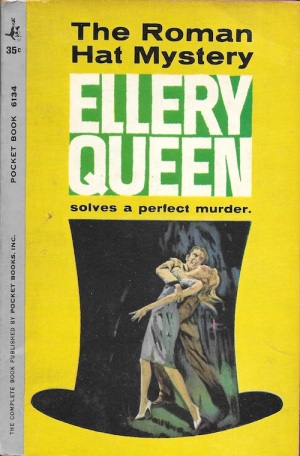 Roman Hat Mystery (1929), The French Powder Mystery (1930). I picked up a copy of Greek Coffin (1932) but I read that so intensely for a piece a few years ago I still know it off by heart. Roman Hat and French Powder are just as exquisitely boring as I remembered. The word that keeps coming to my mind is “inexorable”. There may be nothing interesting going on, but by golly we’re getting to the finish, like it or not, and you WILL understand why the answer is the answer, or else.
Roman Hat Mystery (1929), The French Powder Mystery (1930). I picked up a copy of Greek Coffin (1932) but I read that so intensely for a piece a few years ago I still know it off by heart. Roman Hat and French Powder are just as exquisitely boring as I remembered. The word that keeps coming to my mind is “inexorable”. There may be nothing interesting going on, but by golly we’re getting to the finish, like it or not, and you WILL understand why the answer is the answer, or else. Phoebe Atwood Taylor: Out Of Order (1936), Punch With Care (1946), Figure Away (1937), and a bunch of others. At my most media-free point, when everything was off to storage and the television and internet hadn’t been installed yet, my sister brought me a bag of Phoebe Atwood Taylor’s Asey Mayo mysteries, and I was bloody happy to see them. For me these are comfort food. Absolutely first-rate mysteries if you’re not asking for much beyond amusement and diversion; well-plotted, amusing characters, wacky plots, tight solutions, and a fast-moving story line that carries you to the end. What’s not to like?
Phoebe Atwood Taylor: Out Of Order (1936), Punch With Care (1946), Figure Away (1937), and a bunch of others. At my most media-free point, when everything was off to storage and the television and internet hadn’t been installed yet, my sister brought me a bag of Phoebe Atwood Taylor’s Asey Mayo mysteries, and I was bloody happy to see them. For me these are comfort food. Absolutely first-rate mysteries if you’re not asking for much beyond amusement and diversion; well-plotted, amusing characters, wacky plots, tight solutions, and a fast-moving story line that carries you to the end. What’s not to like? Leslie Ford: Three Bright Pebbles (1938), All For the Love of a Lady (1944), Honolulu Murders (1946), The Woman In Black (1947), Ill-Met By Moonlight (1937), and a handful of others I can’t be bothered to dig out, about Washington widow Grace Latham and the soldierly Col. Primrose. There might have been a piece here about how this writer’s two different series (the other is the Mr. Pinkerton novels as by David Frome) are both
Leslie Ford: Three Bright Pebbles (1938), All For the Love of a Lady (1944), Honolulu Murders (1946), The Woman In Black (1947), Ill-Met By Moonlight (1937), and a handful of others I can’t be bothered to dig out, about Washington widow Grace Latham and the soldierly Col. Primrose. There might have been a piece here about how this writer’s two different series (the other is the Mr. Pinkerton novels as by David Frome) are both completely different and both rather awful, but … ugh. I don’t mind Mrs. Latham’s cook Lilac as much as others seem to — some novels of the period don’t have any characters of different skin colours at all, and while it’s not the best characterization ever, at least it’s friendly and well-meant. However, Leslie Ford writes pretty much the same book over and over, and silly remarks about coloured servants are just one of the cliches; white people don’t come off well either. Beautiful young girl, handsome young man, someone did something stupid and cannot tell anyone what, romantic entanglements, evil businessman wants to do something wicked, stupid middle-aged women with too much money, Had I But Known, social position, wartime Washington DC, silly Mrs. Latham and strong-jawed nonentity Colonel Primrose and the very unfunny Sergeant Buck, semi-surprising ending. There, I just saved you a lot of money.
completely different and both rather awful, but … ugh. I don’t mind Mrs. Latham’s cook Lilac as much as others seem to — some novels of the period don’t have any characters of different skin colours at all, and while it’s not the best characterization ever, at least it’s friendly and well-meant. However, Leslie Ford writes pretty much the same book over and over, and silly remarks about coloured servants are just one of the cliches; white people don’t come off well either. Beautiful young girl, handsome young man, someone did something stupid and cannot tell anyone what, romantic entanglements, evil businessman wants to do something wicked, stupid middle-aged women with too much money, Had I But Known, social position, wartime Washington DC, silly Mrs. Latham and strong-jawed nonentity Colonel Primrose and the very unfunny Sergeant Buck, semi-surprising ending. There, I just saved you a lot of money.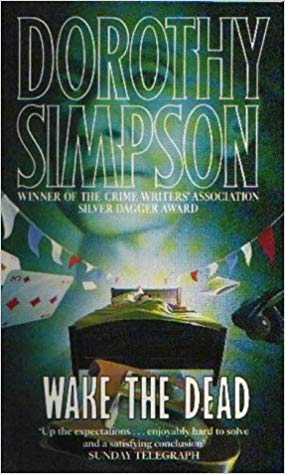 Dorothy Simpson, Wake the Dead (1992). Just … bland. The occasional spark of interesting writing but truly I’d rather watch Midsomer Murders. A boring detective investigating upper-class twits. If you follow the principle that the most morally upright people end up to have done the worst things, you will anticipate the ending easily.
Dorothy Simpson, Wake the Dead (1992). Just … bland. The occasional spark of interesting writing but truly I’d rather watch Midsomer Murders. A boring detective investigating upper-class twits. If you follow the principle that the most morally upright people end up to have done the worst things, you will anticipate the ending easily. This is domestic suspense, not usually my thing but wow, such a tight and smart book. An elderly spinster moves in as the lodger with a nice young couple with a young baby and becomes part of the family, until they find out she’s just out of prison on a charge of murdering a baby. But then absolutely not what you’d expect from there on; the young couple doesn’t believe Miss Trubb could’ve done it and proceeds to investigate, with surprising results. Perhaps the best thing by Bell I’ve ever read; this is a strong mystery plot with strong writing and very strong characterization to make Miss Trubb so believable. Not at all a happy ending but a very right one. This made me think of Patricia Wentworth in that this is the kind of story Wentworth understood; there’s a set of nested fears in this novel about being elderly and female and poor and homeless and powerless that will be most powerful to a female reader, I think.
This is domestic suspense, not usually my thing but wow, such a tight and smart book. An elderly spinster moves in as the lodger with a nice young couple with a young baby and becomes part of the family, until they find out she’s just out of prison on a charge of murdering a baby. But then absolutely not what you’d expect from there on; the young couple doesn’t believe Miss Trubb could’ve done it and proceeds to investigate, with surprising results. Perhaps the best thing by Bell I’ve ever read; this is a strong mystery plot with strong writing and very strong characterization to make Miss Trubb so believable. Not at all a happy ending but a very right one. This made me think of Patricia Wentworth in that this is the kind of story Wentworth understood; there’s a set of nested fears in this novel about being elderly and female and poor and homeless and powerless that will be most powerful to a female reader, I think. Philip MacDonald, The Polferry Riddle (1931). A terrible book by this excellent writer; his worst ending that I can remember. A waste of Anthony Gethryn. A waste of my time. Always a bad sign when you begin to re-read a mystery and have a sinking feeling … “Oh, this is the one where X, Y, and Z that annoyed me so much the first time.” It still does.
Philip MacDonald, The Polferry Riddle (1931). A terrible book by this excellent writer; his worst ending that I can remember. A waste of Anthony Gethryn. A waste of my time. Always a bad sign when you begin to re-read a mystery and have a sinking feeling … “Oh, this is the one where X, Y, and Z that annoyed me so much the first time.” It still does. line and they’ve been a source of good reading in the past. I have to say, this one just stopped me dead. It’s not once in five years that I fail to finish a book, but this one was too ghastly to continue. The author is trying to be funny and apparently our mutual senses of humour are completely incompatible. It’s about three people in their 80s investigating a crime and I cannot think that the author likes elderly people very much. Two old professors and their elderly lady friend dither and dissemble and say enigmatic things and go off on highways and byways and it’s just patronizing and annoying and anti-elderly. Once I stopped focusing on the annoying characterization, the simplistic plot allowed me to skip the middle of the book and proceed to the end, where I confirmed that, yes, I had figured out what was going on. I almost never do that, but I just couldn’t stand another minute of this one.
line and they’ve been a source of good reading in the past. I have to say, this one just stopped me dead. It’s not once in five years that I fail to finish a book, but this one was too ghastly to continue. The author is trying to be funny and apparently our mutual senses of humour are completely incompatible. It’s about three people in their 80s investigating a crime and I cannot think that the author likes elderly people very much. Two old professors and their elderly lady friend dither and dissemble and say enigmatic things and go off on highways and byways and it’s just patronizing and annoying and anti-elderly. Once I stopped focusing on the annoying characterization, the simplistic plot allowed me to skip the middle of the book and proceed to the end, where I confirmed that, yes, I had figured out what was going on. I almost never do that, but I just couldn’t stand another minute of this one.

 What is this book about?
What is this book about? Why is this book worth your time?
Why is this book worth your time?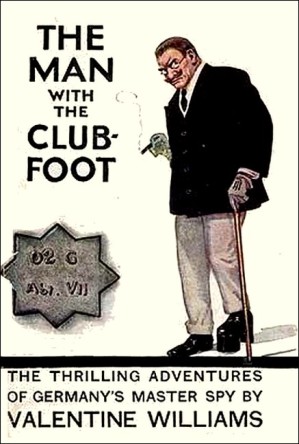 There’s a number of reasons why the story lacks that realistic quality; I truly do think that one of the reasons is that Valentine Williams was deliberately not trying to write realistically. Looking over his publishing history, it seems as though his greatest successes were in the area of espionage/adventure fiction. He’d had some personal experience in that area and his stories about the evil genius “Clubfoot” fighting against the British Secret Service appear to have been by far his most popular work (judging solely by what I can find about him; everything seems to mention Clubfoot). I flipped through a couple of the Clubfoot books and they seem cast in an antique form; clean-limbed young Englishmen rescuing plucky young beauties from Sinister Foreigners. The Daily Telegraph called The Man with the Clubfoot “An extremely vivid story, full of thrilling incidents.” I think that’s accurate for as much of Williams’s work as I’ve seen.
There’s a number of reasons why the story lacks that realistic quality; I truly do think that one of the reasons is that Valentine Williams was deliberately not trying to write realistically. Looking over his publishing history, it seems as though his greatest successes were in the area of espionage/adventure fiction. He’d had some personal experience in that area and his stories about the evil genius “Clubfoot” fighting against the British Secret Service appear to have been by far his most popular work (judging solely by what I can find about him; everything seems to mention Clubfoot). I flipped through a couple of the Clubfoot books and they seem cast in an antique form; clean-limbed young Englishmen rescuing plucky young beauties from Sinister Foreigners. The Daily Telegraph called The Man with the Clubfoot “An extremely vivid story, full of thrilling incidents.” I think that’s accurate for as much of Williams’s work as I’ve seen. What do we learn about the social milieu?
What do we learn about the social milieu? There’s an excellent article on the college widow from the Paris Review
There’s an excellent article on the college widow from the Paris Review  The idea of the White Russian who has come down in social rank is also part of a vanished milieu that we don’t really grasp any more; Inspector Alleyn actually started his career lumbered with a White Russian butler (in 1934’s A Man Lay Dead) but this gentleman was mercifully retconned out of existence by the second book, as I recall. I’m not sure what degree of sartorial excellence, or lack of excellence, is meant to be indicated by Ivan’s plum-coloured livery (where the standard is unrelieved black). That his employer is a show-off? Aspiring to the ton? Hard to say.
The idea of the White Russian who has come down in social rank is also part of a vanished milieu that we don’t really grasp any more; Inspector Alleyn actually started his career lumbered with a White Russian butler (in 1934’s A Man Lay Dead) but this gentleman was mercifully retconned out of existence by the second book, as I recall. I’m not sure what degree of sartorial excellence, or lack of excellence, is meant to be indicated by Ivan’s plum-coloured livery (where the standard is unrelieved black). That his employer is a show-off? Aspiring to the ton? Hard to say. There’s a mention of a man in a Palm Beach suit, which I thought was white and double-breasted. Other people agree, but I found at least one differing definition: “The “Palm Beach Suit” is a term used to describe the combination of navy blazer, buttondown oxford cloth shirt, stone colored chino’s or khakis, and brown slip-on mocs like topsiders worn with no socks.” Again, perhaps a question more suited to Moira at Clothes in Books, but it interested me.
There’s a mention of a man in a Palm Beach suit, which I thought was white and double-breasted. Other people agree, but I found at least one differing definition: “The “Palm Beach Suit” is a term used to describe the combination of navy blazer, buttondown oxford cloth shirt, stone colored chino’s or khakis, and brown slip-on mocs like topsiders worn with no socks.” Again, perhaps a question more suited to Moira at Clothes in Books, but it interested me. I had a small stroke of luck a few weeks ago and found a handful of Patricia Wentworth titles in a charity shop that included a couple of my personal favourites; it seemed like an opportune time for some re-reading and reconsideration.
I had a small stroke of luck a few weeks ago and found a handful of Patricia Wentworth titles in a charity shop that included a couple of my personal favourites; it seemed like an opportune time for some re-reading and reconsideration. My most recent re-reading of The Chinese Shawl produced a somewhat different thought pattern than my usual pleasant nostalgia, though, and I wanted to share it with you. Essentially I realized that over the years in my mind I have developed a kind of idealized mystery novel template in the back of my mind; something against which I hold up Golden Age mysteries and see where they fail to live up to my hoped-for experience. But when it occurred to me that I had never really tried to determine what that idealized mystery novel looked like, I knew I had the beginnings of an article for you.
My most recent re-reading of The Chinese Shawl produced a somewhat different thought pattern than my usual pleasant nostalgia, though, and I wanted to share it with you. Essentially I realized that over the years in my mind I have developed a kind of idealized mystery novel template in the back of my mind; something against which I hold up Golden Age mysteries and see where they fail to live up to my hoped-for experience. But when it occurred to me that I had never really tried to determine what that idealized mystery novel looked like, I knew I had the beginnings of an article for you.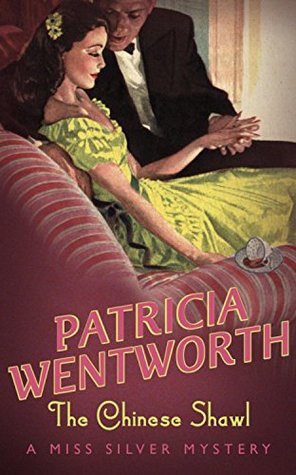 What is this novel about?
What is this novel about? Laura also meets one of the many young men in Tanis Lyle’s orbit, the handsome young airman Carey Desborough, who is recovering from a crash and may not be able to fly again. Carey was once engaged to Tanis but she broke it off. As frequently happens in Wentworth novels, Carey and Laura fall immediately in love and are clearly on their way to the altar, but Tanis decides that, no, she hadn’t broken off the engagement after all.
Laura also meets one of the many young men in Tanis Lyle’s orbit, the handsome young airman Carey Desborough, who is recovering from a crash and may not be able to fly again. Carey was once engaged to Tanis but she broke it off. As frequently happens in Wentworth novels, Carey and Laura fall immediately in love and are clearly on their way to the altar, but Tanis decides that, no, she hadn’t broken off the engagement after all. The house has other inhabitants; the full-time dwellers are Agnes’s dull and dumpy cousin Lucy (chapter 4 starts off with a genealogical chart for anyone unable to follow the familial relationships), and Agnes’s long-time maid Perry and other staff, but there is a wing full of wartime evacuees and another house guest — Miss Silver, an old school-friend of Lucy and Agnes. Tanis has created a house party full of anxiety and jealousy among many of her suitors and their current romantic partners (when she re-announces her engagement to Carey, which is merely a ploy for this poisonous young woman to get her own way); when Tanis’s ex-husband shows up and makes a scene, the tension levels are raised even higher.
The house has other inhabitants; the full-time dwellers are Agnes’s dull and dumpy cousin Lucy (chapter 4 starts off with a genealogical chart for anyone unable to follow the familial relationships), and Agnes’s long-time maid Perry and other staff, but there is a wing full of wartime evacuees and another house guest — Miss Silver, an old school-friend of Lucy and Agnes. Tanis has created a house party full of anxiety and jealousy among many of her suitors and their current romantic partners (when she re-announces her engagement to Carey, which is merely a ploy for this poisonous young woman to get her own way); when Tanis’s ex-husband shows up and makes a scene, the tension levels are raised even higher. At this point the official investigation begins under Superintendent Randal March, who had once been a schoolboy under Miss Silver’s tutelage. I’ll go more deeply into the details below, but essentially a number of suspects present themselves to the attention of the police. Some are excellent suspects, like the crazy ex-husband; some are merely obvious, like a few couples whom Tanis was splitting up by “taking” the male, apparently merely for practice. And then a number of primary characters are more or less equally under suspicion, with no known motive.
At this point the official investigation begins under Superintendent Randal March, who had once been a schoolboy under Miss Silver’s tutelage. I’ll go more deeply into the details below, but essentially a number of suspects present themselves to the attention of the police. Some are excellent suspects, like the crazy ex-husband; some are merely obvious, like a few couples whom Tanis was splitting up by “taking” the male, apparently merely for practice. And then a number of primary characters are more or less equally under suspicion, with no known motive.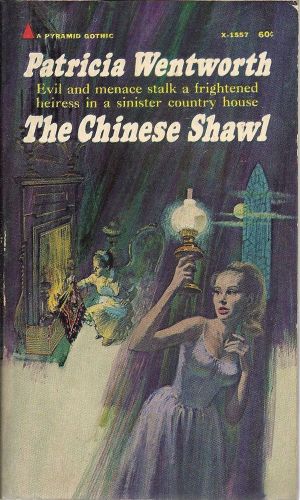 Why is this novel worth your time?
Why is this novel worth your time? So in chapter 39 the blackmailing maid is killed by a shadowy figure, and immediately after in chapter 40 Laura hears and surprises Agnes Fane in the act of walking around the house. In chapter 41, dull cousin Lucy comes to rouse Laura yet again, because Agnes has had some sort of health crisis and Lucy needs help getting her a doctor without letting anyone know (because these sorts of things should be kept in the family). Lucy babbles on to Laura about the night Tanis was murdered, and the reader is increasingly convinced that Lucy is not quite saying outright that Agnes shot Tanis in mistake for Laura. And since this fits the plot so far, we don’t quite know what’s coming next but we expect that Agnes will have to pay for her crimes.
So in chapter 39 the blackmailing maid is killed by a shadowy figure, and immediately after in chapter 40 Laura hears and surprises Agnes Fane in the act of walking around the house. In chapter 41, dull cousin Lucy comes to rouse Laura yet again, because Agnes has had some sort of health crisis and Lucy needs help getting her a doctor without letting anyone know (because these sorts of things should be kept in the family). Lucy babbles on to Laura about the night Tanis was murdered, and the reader is increasingly convinced that Lucy is not quite saying outright that Agnes shot Tanis in mistake for Laura. And since this fits the plot so far, we don’t quite know what’s coming next but we expect that Agnes will have to pay for her crimes. It’s actually a cheat, since at no previous time has Wentworth remarked that Lucy is short-sighted. She has noted, though, that Lucy reads a lot of thrillers and tries to act like she doesn’t, so perhaps that is hint enough.
It’s actually a cheat, since at no previous time has Wentworth remarked that Lucy is short-sighted. She has noted, though, that Lucy reads a lot of thrillers and tries to act like she doesn’t, so perhaps that is hint enough. Well, there is something here that I only find among the best-constructed mysteries — and it’s the reason I had to abandon spoilers and Tell All, in order to get this across. Essentially there is an underlying structure in this book where the physical facts and actions of the characters combine to produce a puzzle; but all the physical facts and actions of the characters share a kind of thematic bond. The book is “about” something.
Well, there is something here that I only find among the best-constructed mysteries — and it’s the reason I had to abandon spoilers and Tell All, in order to get this across. Essentially there is an underlying structure in this book where the physical facts and actions of the characters combine to produce a puzzle; but all the physical facts and actions of the characters share a kind of thematic bond. The book is “about” something. I have to say, as a reader I find this kind of mystery to be a very satisfying reading experience. I look for thematic echoes like this in mysteries and very frequently do not find them, although they are the everyday stuff of what I term “literary fiction”. Even more interesting to me is the idea that these echoes result in a mystery plot that grows out of character and not mechanical necessity.
I have to say, as a reader I find this kind of mystery to be a very satisfying reading experience. I look for thematic echoes like this in mysteries and very frequently do not find them, although they are the everyday stuff of what I term “literary fiction”. Even more interesting to me is the idea that these echoes result in a mystery plot that grows out of character and not mechanical necessity. I’m not saying I dislike Chinese Orange, by the way, just that I much prefer it when a mystery has some element of … psychological necessity, if you will. I like detective novels even more when they contain an attention to detail such that every sub-plot contains the same thematic element. Here, people’s lives worsen when they interfere with romantic relationships, or their own romantic relationship is damaged or broken. Not only are Tanis and Agnes and Laura and Carey all affected by the broken engagement 20 years ago, husbands who dally with Tanis get suspected of murder by their wives, and vice versa. The puzzle is not as difficult as Chinese Orange but there is a good balance between plot and characterization here, and I enjoy that.
I’m not saying I dislike Chinese Orange, by the way, just that I much prefer it when a mystery has some element of … psychological necessity, if you will. I like detective novels even more when they contain an attention to detail such that every sub-plot contains the same thematic element. Here, people’s lives worsen when they interfere with romantic relationships, or their own romantic relationship is damaged or broken. Not only are Tanis and Agnes and Laura and Carey all affected by the broken engagement 20 years ago, husbands who dally with Tanis get suspected of murder by their wives, and vice versa. The puzzle is not as difficult as Chinese Orange but there is a good balance between plot and characterization here, and I enjoy that.